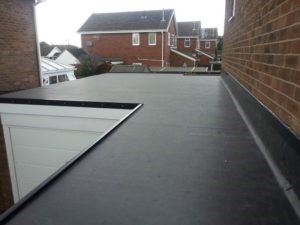Collecting rainwater from flat roof : pay attention !
After treatment, the reclaimed rainwater can be used through a separate hydraulic network from that of city water to supply washing machines, toilets, and any devices for cleaning floors, cars, and watering plants.
Once sterilized by UV-C rays, it could even be used for showers, dishwashers, or other bathroom faucets. However, this requires compliance with a set of rules. Airwatec has outlined and named them
“The 5 Golden Rules for Good Rainwater Recovery.”
This rainwater recovery process requires special attention when flat roofs are covered with bituminous membranes. The quality of the collected water, especially during hot summer periods, depends closely on the composition of these membranes and how they are installed.
Almost all bituminous sealing membranes will pose potential risks to the quality of the collected water due to the transfer of chemical elements. This issue arises from bituminous residues from the membrane and the welds between the strips. It will be technically very difficult and expensive to remove these discolorations and chemicals from stored water.
The only sealing membranes entirely neutral regarding the quality of the collected rainwater must be 100% EPDM material. The assembly and installation of these membranes are done cold or by vulcanization of the strips. The 100% EPDM Firestone membrane is an example of a sealing membrane to prioritize for unaltered water quality. Membranes partially composed of EPDM and hot-bonded should be avoided.
Any flat roof should never contain water puddles. Their presence will compromise the quality of the collected rainwater. A sloped roof with slate or tile remains the best solution for rainwater harvesting.
Any type of green roof is incompatible with rainwater harvesting and utilization for sanitary purposes.
The TRIO-UV Cintropur is a reference technology for a notable improvement in the quality of rainwater. It has a triple action: mechanical filtration of 25 µm to remove micro-particles, treatment with activated carbon for tastes, odors, colors, pesticides, and herbicides, followed by sterilization with UV-C lamps to neutralize microorganisms, bacteria, and viruses.
In conclusion, rainwater harvesting on flat roofs with bituminous membranes will significantly reduce the scope after filtration and treatment of this rainwater. When rainwater is well collected and stored in an underground concrete tank, it opens up many usage possibilities, with or without filtration, to the great satisfaction of the end-user.
Rainwater directly from the sky contains no lime, iron, nitrate, pesticides, or herbicides.
